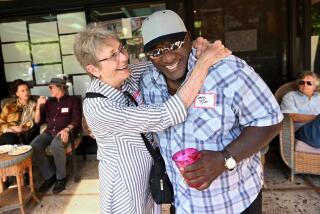They married in 1968 as a nation fought for civil rights. 50 years later an interracial couple looks back
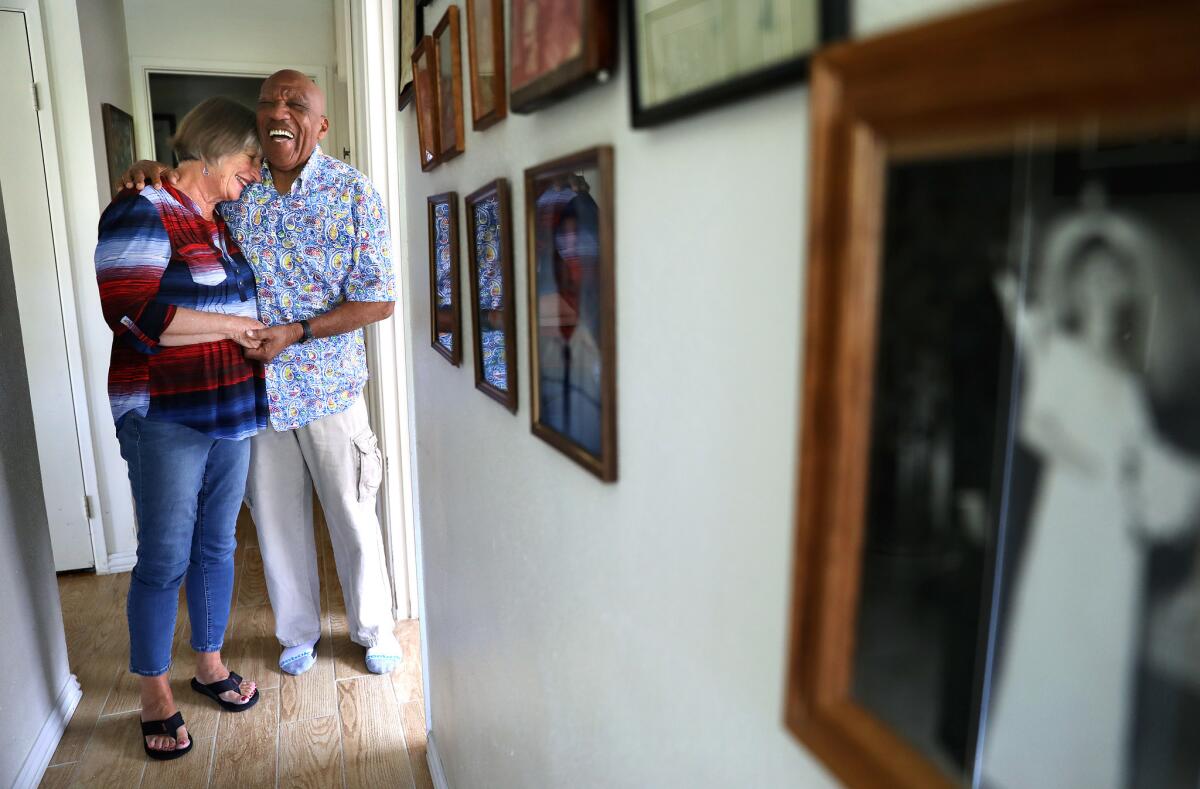
Their wedding day was bookended by the deaths of the Rev. Martin Luther King Jr. in April and Robert F. Kennedy in June. The Vietnam War raged abroad as a fight for civil rights continued at home.
For many, 1968 was marked by violence, bloodshed and protest. For Janice, a white woman, and Charles, a black man, 1968 marked the unlikely beginning of a 50-year marriage filled with four children and 11 grandchildren.
Interracial marriages were by no means a societal norm the year the Tylers wed. The Supreme Court’s ruling in Loving v. Virginia, which struck down the remaining laws that banned such unions, was handed down just one year before. Charles and Janice were not directly affected by the case – Illinois wasn’t one of the remaining 16 states. They did face prejudice, nonetheless.
“Back then, you just didn’t see black and white,” Charles said about the racial divide.
The Tylers weren’t the first to bridge that divide with “I do.” And they wouldn’t be the last. These days, commercials and television shows routinely feature couples from different racial or ethnic backgrounds. And the daughter of a black woman and a white man just married a member of the British royal family.
Now, as the world and nation look back on 1968, the Tylers can reflect on how society changed to make such events commonplace — and how they weathered 50 years that weren’t always easy.
Their love story starts one year before on Jan. 26, 1967, during the biggest snowstorm to ever hit Chicago.
“The city never shuts down. It shut down,” Janice recalled.
Charles was 27. Janice was 24. The two lived a block apart. Word got to Janice that a man down the street was throwing a party in his first floor unit. She wouldn’t typically venture to a party without a friend. But a frozen city called for an exception. What else was there to do?
The party host was Charles. Months later, the two started dating.
Despite his insistence that he would never settle down, let alone marry a white woman, Charles and Janice grew closer. They were engaged by January 1968 and married that May.
After five decades of marriage, Charles and Janice finish each other’s sentences with detailed interjections, jabs and laughter.
“We try to laugh a lot. Even when it’s hard,” Charles said.
In their first year of marriage, the Tylers sued a Realtor for discrimination after he refused to show them a home. The Chicago Sun-Times wrote about the case after the Tylers won:
“Obviously, the belief that all American citizens should have equal access to any housing they can afford is not a latter-day thing. It is just that many segments of society, and many echelons of government, have been reluctant to accept a pragmatic fact of American life.
This is painfully the case in Illinois.”
Charles, Janice and their newborn girl, Susan, moved into their new home despite neighbors’ attempts to keep them out.
Less than a week later, Charles got a call at work.
“Your house is burning.”
The fire was chalked up to “spontaneous combustion.” There was no criminal investigation, but the Tylers suspected foul play. Months later, they would learn that a former neighbor who had a key to the house was the likely culprit. But they wouldn’t let the plausible reality shake them.
“We were just kids,” Janice said.
“I’m still a kid,” Charles insisted, with a smirk.
Janice erupted into laughter
“In your dreams,” she teased.
Charles grew up in an urban neighborhood of Washington, D.C. When he was 13, his father was shot during a hunting trip in Virginia when a gun went off accidentally. Charles would later learn that his uncle took his father to several hospitals, but was denied any help. Eventually, Charles’ father bled to death.
Janice was raised in a rural farming town in Illinois. She didn’t face the discrimination that Charles did, but would bear her fair share in marriage – an occasional letter or message addressed to her with a racial slur; neighbors who banned their children from playing with theirs in Chicago; racist comments overheard in Huntington Beach after the family moved there in 1982.
The Tylers don’t dwell on the bad. They recount those events when asked, but have spent most of their time focused on the good – like their families’ early acceptance of their relationship and the friendship that blossomed between their mothers.
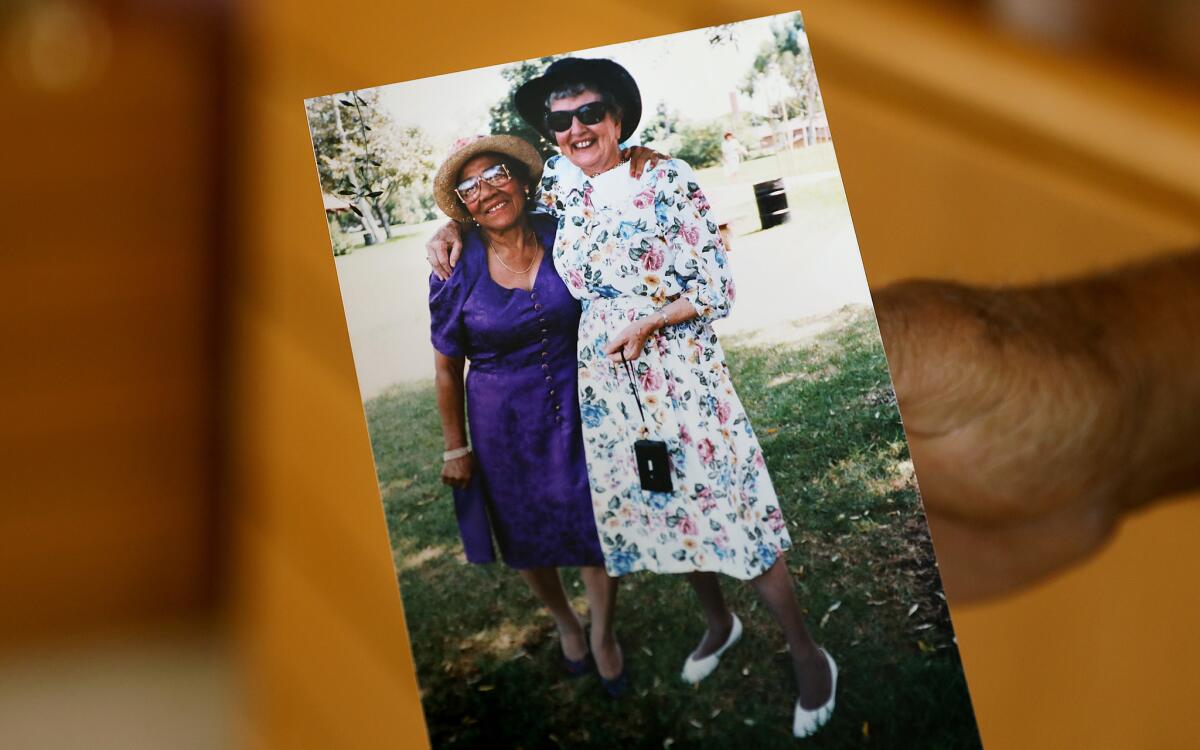
“We were very fortunate,” Charles said.
An Army captain and former plant manager for Arco, Charles spent the past 23 years teaching P.E. and math at the Pegasus School – a local elementary school. He retired in July.
Janice dedicated much of her life working with women and children, opening a battered women’s shelter in Chicago and in Laguna Beach. Now retired, she’s spent the past several years volunteering at the local library.
Their children have followed in their footsteps.
Susan, the oldest, is a social worker. Then there’s Charlie, a teacher. Tommy is a public defender and their youngest, Christine, is a nurse.
“All of them are involved in humanitarian work,” Janice said.
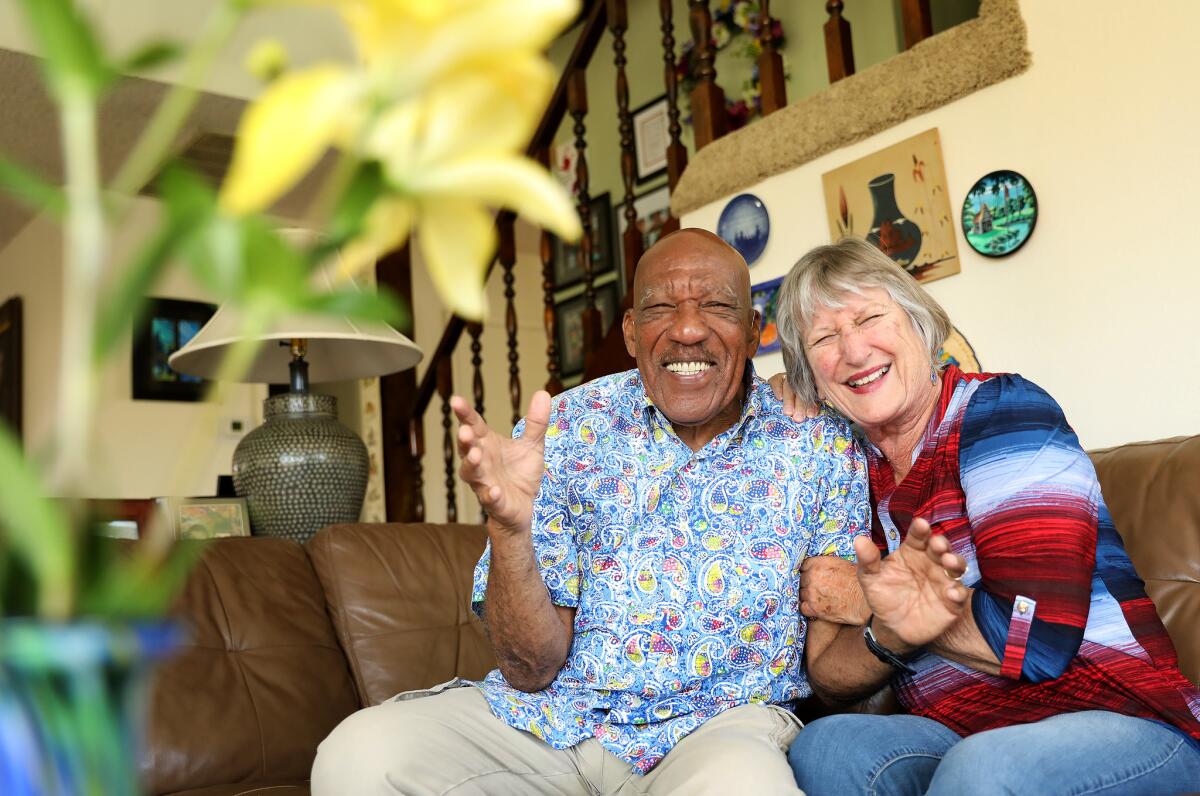
On a recent morning sunlight flooded the Tylers’ home. The walls and shelves are filled with photos of family reunions, art, memorabilia from travels and cruises, collages of Charles’ past classes and scrapbooks filled with reminders of the milestones they’ve reached throughout their marriage – an image of that fated Chicago snowstorm, a photo of Charles playing Santa Claus for one of Janice’s events, ticket stubs, Scrabble scores and love letters.
Fifty years have passed since the Tylers’ wedding day. Fifty years since the difference in their skin color was the first thing people noticed about their union.
“We can walk around now and no one pays attention to us,” Charles said.
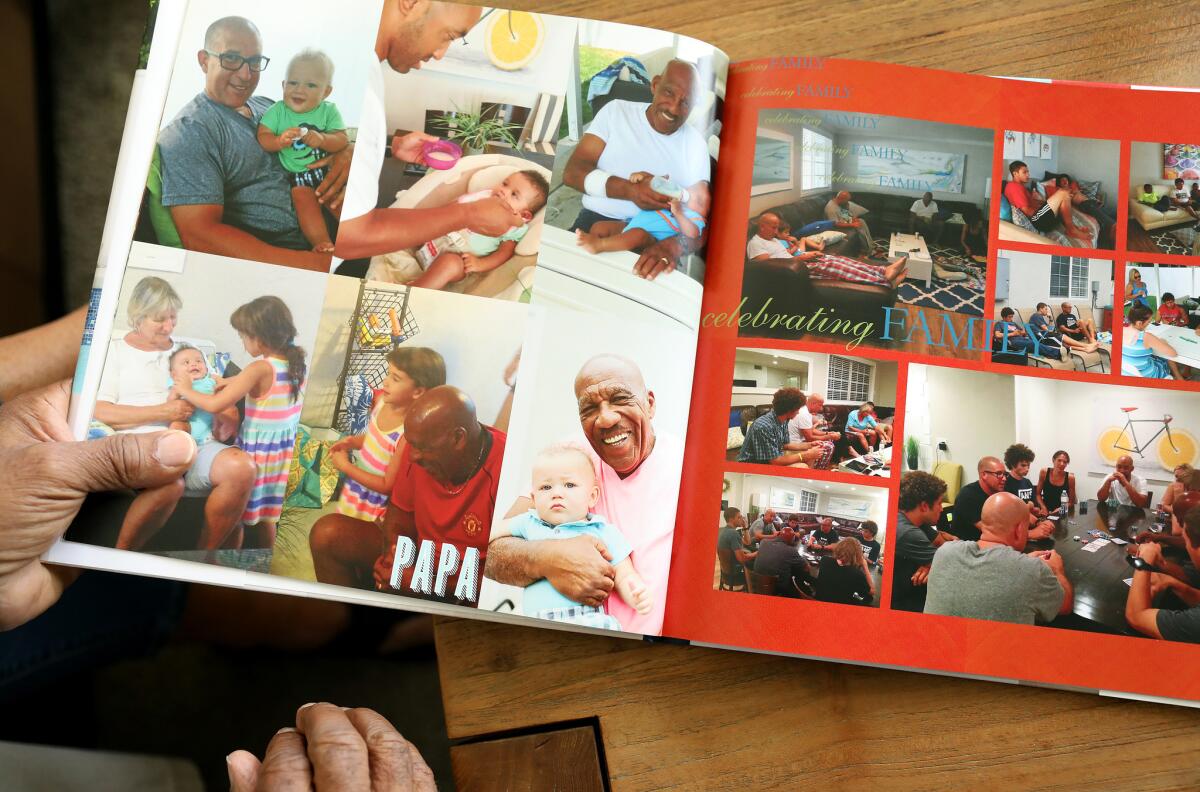
A young interracial couple in the neighborhood refers to them as the “Jackie Robinson” of marriage.
“It’s kind of encouraging to us that it’s more of the norm now and more accepted,” Janice said, smiling.
Charles and Janice credit their long-lasting marriage to their shared values – with family being their first priority – honesty and their mutual encouragement of each other’s independent achievements.
“It’s important that you get along and you have common interests, but that you’re also free to be the best you,” Janice said. “You allow the other person to grow and develop – not necessarily attached to you.”
“Nothing that happens with me is important unless I can share it with Jan – good or bad,” Charles said.
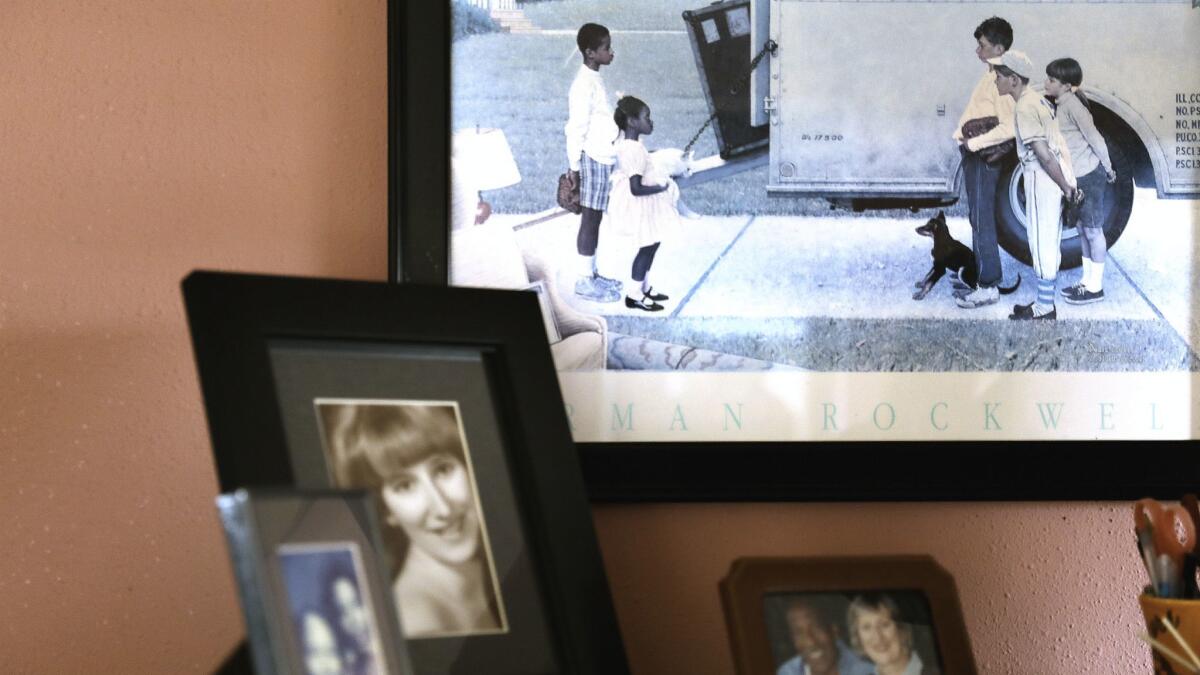
A Norman Rockwell hangs over the wardrobe in the Tylers’ bedroom. A young black brother and sister stand outside a moving van; they are moving into the neighborhood. Across from them stand two young boys and a girl, all white. A neighbor peers through her window. The painting, titled, “New Kids in the Neighborhood,” was created the same year Charles and Janice met and depicts the integration of a Chicago suburb.
It’s the Tylers’ favorite Rockwell painting. If you stare at it long enough, you’ll notice the similarities between the kids — the baseball gloves the boys are holding, the pink ribbons the girls are wearing. Cutting through the tension is the underlying suggestion that perhaps the divide between black and white won’t be permanent.
The Times learned of the Tylers’ story through our 1968 memory hotline. If you have a memory you’d like to share from 1968, leave a message at (951) 39-HeyLA (951-394-3952) or write to us here.
Twitter: @cshalby
ALSO:
1968: A timeline of anger, grief and change
East L.A., 1968: ‘Walkout!’ The day high school students helped ignite the Chicano power movement
How MLK’s death affected a nation, as told by those who remember it
More to Read
Sign up for Essential California
The most important California stories and recommendations in your inbox every morning.
You may occasionally receive promotional content from the Los Angeles Times.


